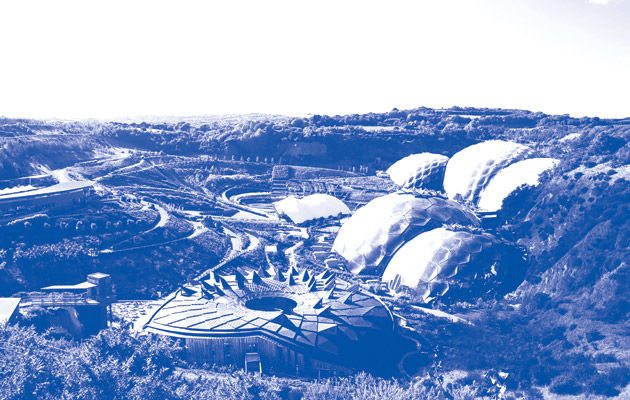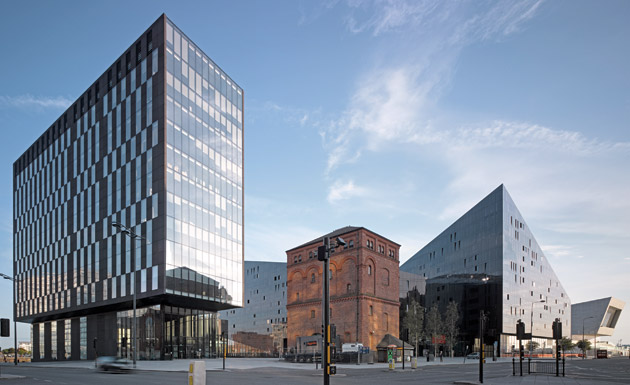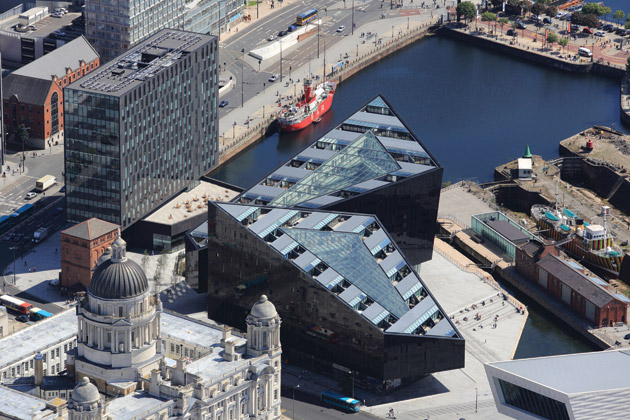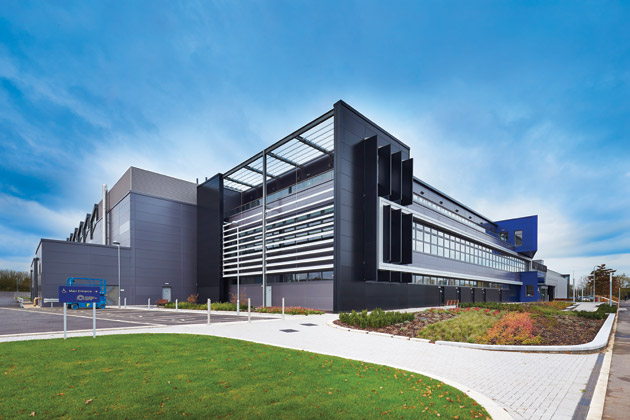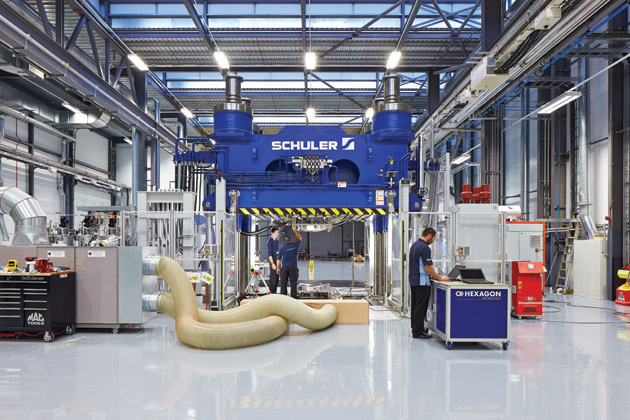|
|
||
For decades, the built landscape of Britain has been shaped by European funding. So how will future historians view the ruins of the EU era, asks Tim Abrahams?As the various means of resisting Brexit fall away, it is clear that we are moving into a new landscape. In some ways, this ‘landscape’ is a metaphorical one: the UK will remove itself from a series of treaties and, through a messy, fraught process, sign new ones. Budget previously sent to Brussels will be reassigned. But in terms of urbanism, this new landscape is very real. Huge parts of the United Kingdom were redrawn and rebuilt with the help of European Union money, and in particular with the help of the European Regional Development Fund (ERDF). No ERDF, no Eden Project. Now that these revenue streams are ending, it is worth asking ourselves, what did the EU contribute to the built fabric of the UK? What is ending and what is continuing? What will British architectural historians of the future look back on and class as the architecture of the EU? In his book A Guide to the New Ruins of Great Britain, Owen Hatherley examines the impact of the Urban Renaissance initiative, a planning-policy drive led by New Labour that favoured high-density walkable cities. He notes the way this urban renaissance made ‘piazzas appear, with attendant coffee concessions, promising to bring European sophistication to Derby or Portsmouth’. Hatherley revisited the idea in a recent article, suggesting that the Brexit vote could partially be explained by the unequal distribution of such perceived tropes of European sophistication. To simplify rudely, he looks at the piazzas or balconies on new high-rise apartments in former industrial cities, saying these pseudo-European typologies were only available to a moneyed elite and thus it’s not surprising that the working classes turned against Europe in the referendum. This is a good starting point. But we should be careful of making the leap that places such as, say, Millennium Square in Sheffield, with its steel-ball water features, represent a remote, bureaucratic Europe. If we examine how and where these projects were delivered, we get a greater sense of what made aspects of the urbanism of this period particularly identifiable as belonging to the EU, rather than simply being an expression of an icky Blairite pseudo-cosmopolitanism. Before the Maastricht Treaty was signed in 1992 and the ERDF grew dramatically, it is relatively easy to make out what the EU did. Funding grants were made directly to big projects such as 1991’s International Convention Centre (ICC) in Birmingham, for which the EU stumped up a quarter of the £200 million budget. |
Words Tim Abrahams
Above: The Eden Project, Cornwall by Grimshaw Architects (1998–2001) |
|
|
||
|
Mann Island, Liverpool by Broadway Malyan (2008–14) |
||
|
The ICC, in its physical expression and access to funding, is a perfect model for what comes later: a massive sprawling series of halls, interrupted by high-tech outbursts; blue steel gantries connecting mezzanines and blue steel columns supporting token canopies, all designed to interrupt the endless facade and show visitors where to find the entrance. It is a structure that acts as an incubator for different professional groups to come together and plan how to make money. Jacques Delors – the ur-Eurocrat – laid the foundation stone. Yet after Maastricht things get muddier. The ERDF scheme exploded in scale, providing a uniform and transcontinental means for such priorities as creating further education colleges in former mining districts, such as Coleg Gwent in Newport by Holder Mathias Architects. The primary task of the ERDF’s grants was always to stimulate business activity though things like skills development, not to plan and build. Obviously this is a contradiction – what if the greatest inhibitor to economic activity was poor infrastructure, for example? Of course, the sheer volume of money the EU dispersed – £4.4 billion went to projects in England between 2007 and 2013 – ensured that the impact was felt at an urban level, even if that wasn’t its intended purpose. On the occasions that structural funds were used directly in an urban way, rather than being channelled into training programmes, the results were hardly auspicious. The Libeskind-lite Mann Island Buildings by Broadway Malyan, finally completed in 2014, look like icebergs that have crashed into Liverpool’s waterfront. But even here, the £3.5 million of ERDF money that went into the project was just the tip of a long-term financial commitment that helped keep the city afloat. Merseyside received around £1 billion in EU funds between 2000 and 2006. Looked at from a certain perspective, the continuing existence of Liverpool is the EU’s greatest urban legacy. |
||
|
Mann Island, Liverpool, from above |
||
|
The EU was able to make significant commitments to former industrial cities such as Liverpool in terms of quantity but also of continuity – the upside perhaps of not having a change of ideological outlook every few years. Key to the understanding of how funding and planning came together under the aegis of the EU are the Regional Development Agencies (RDAs). Set up in 1998 under the New Labour government, these quangos were created to access EU cash and spend it. They were also granted planning powers that had previously been part of city government, and were governed by chairs nominated by the government, who managed a board picked from the local community. Let’s just say that, even if these agencies were above reproach and always acted for the betterment of the entire local populace – and why wouldn’t they – they weren’t always seen in this light. How these bodies came up with the ideas on how to spend the money was not always clear or consistent. However, they knew how to present the economic benefits of their preferred schemes to the EU. It is in this context that projects like Millennium Square in Sheffield, completed in 2006, should be considered: spaces that express a highly theatrical vision of a business-ready urban core, with dashes of art to signify a creative economy. Often the business for which these spaces provided the backdrop was simply the administering of EU funds.
Millennium Square, Sheffield, by Allies and Morrison (1998–2006), with Rain by Colin Rose in the foreground In 2010, then communities secretary Eric Pickles claimed that the EU wouldn’t allow the UK government to make the RDAs more accountable, so his department had to take control of the money. Cash was again spent on specific projects such as, say, the National Composites Centre (NCC) near Bristol, which can therefore be more clearly denoted as European. The NCC was created by Bristol University in 2010 to bring high-tech companies and academics together to develop high-quality composite materials for application in many industries, particularly car manufacturing. Designed by Stride Treglown, the NCC offers a layer of laboratory space beneath open-plan offices in a not-half-bad attempt to sex up a business-park shed, complete with protruding atrium and cantilevered verandah, and a number of social spaces in its second phase. It is the acme of the kind of building in which academic research is supposed to monetise itself. It’s also a remote environment for specialists that has been dressed up to be open and user‑oriented. Indeed, if we want to find some good examples of EU buildings for our historians of the future, business parks near universities make rich pickings. The dynamic environments of universities, no doubt, make them perfect partners for an international bureaucracy looking to stimulate entrepreneurial activity. Many such EU-backed buildings were for this high-end research, itself aimed at strengthening manufacture for export. Nothing too rapacious though. When it came to wealth creation, the EU liked to present itself as supporting nice, academic-friendly businesses. |
||
|
Above and below: National Composites Centre, Bristol by Stride Treglown (2010–11) |
||
|
In the last ten years, EU funding has also gravitated to educational facilities that provide vocational training. Structural funds, for example, were granted for Gateshead College’s big move to a grand riverside campus designed by Red Box Design (which promptly folded when five major projects were cancelled following Brexit). The college has a particularly strong relationship with the Nissan plant in Sunderland. Like its Bristol equivalent, the main building has a glass frontage on the ground floor and prominent window on the upper floor surrounded by a soffit. This is a very literal architectural language: academia providing a window into the business community. Of course, much of the EU’s activity is a result of the general vacuum around economic or planning policy in certain geographic regions. For those projects that are seen as a good bet, EU funding is used in an instrumental way to ensure effective delivery. And, in 2011 policy document Cities of Tomorrow – a 120-page text about urban planning funded and published by the EU – the authors state: ‘Urban planning per se is not a European policy competence.’ This policy (#notpolicy) document makes it clear that the EU is in favour of lots of pretty vague things. It is commendably against ‘spatial segregation’ and ‘social polarisation’. Oddly, though, one of the things these authors are in favour of is ‘polycentric urban structures’. Despite support elsewhere in the document for urban densification and against so-called sprawl, some recognition of the need for expansion is made. This unexpected appreciation of polycentrism is perhaps down to the EU’s close relationship with universities. And it is likely that here, in these pockets near new universities or in business parks off the M4, M40 or M62, whether by coincidence or on purpose, that the architecture of the EU will be most easily identifiable to our historians of the future. And these are also the sites – where industry and research meet – where our attempts to create an enduring economy post-Brexit will take place. Perhaps the EU was right all along. |
||
|
|
||

